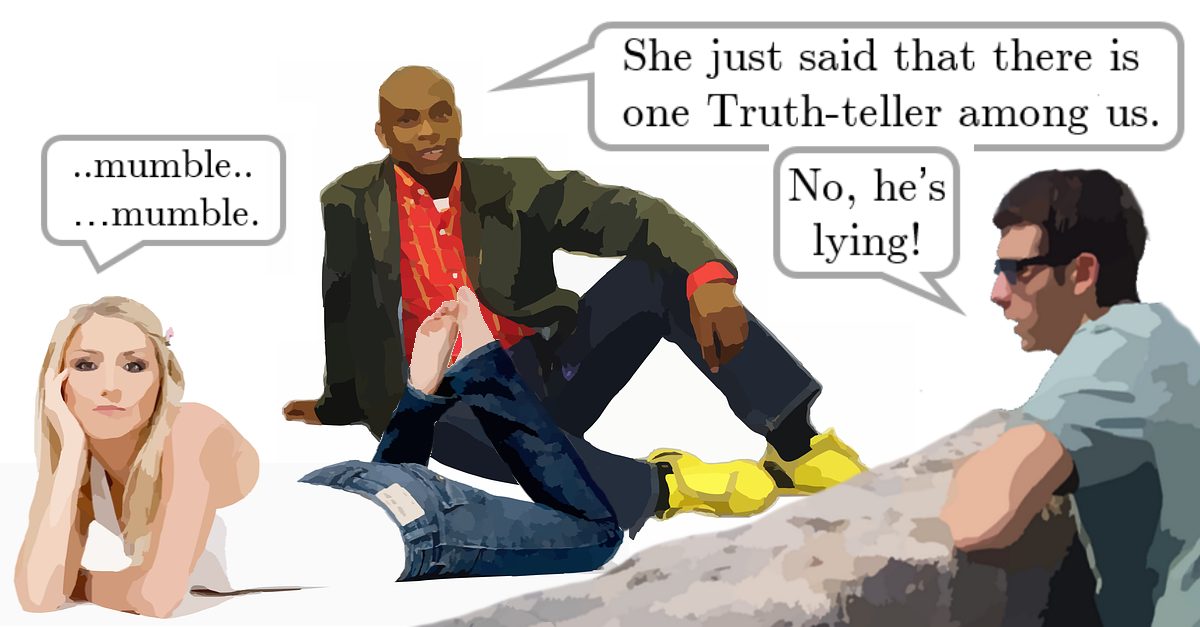Someone's Probably Lying, Right?

An islander on Truth & Untruth is either a Truth-tellers who always tell the truth or a Lying-liars who always lie.
You come across three islanders and ask them, "How many Truth-tellers are there among the three of you?"
- The one lying down responds first, but she talks softly and you don't understand what she says.
- The one seated beside her says, "My friend just said that there is one truth-teller among us."
- But then the standing one counters, "Don't believe that, he's lying!"
What can you determine about the seated and standing inhabitants?
This section requires Javascript.
You are seeing this because something didn't load right. We suggest you, (a) try
refreshing the page, (b) enabling javascript if it is disabled on your browser and,
finally, (c)
loading the
non-javascript version of this page
. We're sorry about the hassle.
Relevant wiki: Truth-Tellers and Liars
* The wording of this question has been changed since I posted my solution. For reference, "knaves" are the liars and "knights" are the truth-tellers. *
We will look at the 4 options that can be assigned to the "lying down" inhabitant, (#1), and see how these options play out with regards to the other two inhabitants. These 4 options are generated by whether or not #1 is a knight or a knave, and by whether of not she did whisper the statement S which the seated inhabitant, (#2), attributes to her.
(i) #1 is a knave and does say S : if she is a knave and did say S then, since she is lying, there is/are either 0 or 2 knights among the inhabitants. Since she did say S , #2 must be a knight, which means #3 must be a knave as he would be calling a knight a liar. This would leave us with a total of 1 knight, which can't be the case since S is a lie. Thus this scenario is impossible.
(ii) #1 is a knave and does not say S : this implies that #2 is lying and is hence also a knave, which in turn means that #3 is telling the truth and is thus a knight.
(iii) #1 is a knight and does say S : this would imply that #2 is also a knight since he is telling the truth. But this would mean that there are 2 knights, (#3 would be lying and hence be a knave), contradicting statement S , which is inconsistent with this option. Thus this scenario is impossible.
(iv) #1 is a knight and does not say S : this implies that #2 is lying and is thus a knave, which would in turn mean that #3 is telling the truth and must thus be a knight.
From this case analysis we see that in both of the two scenarios that are logically possible the seated inhabitant is a knave and the standing one is a knight.
(Note that we cannot make any conclusions about #1, as she could logically either be a knave or a knight base on the information provided.)